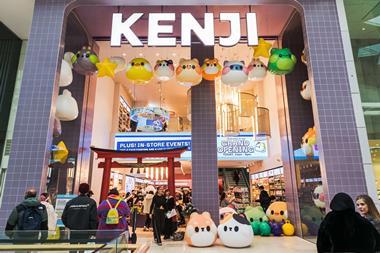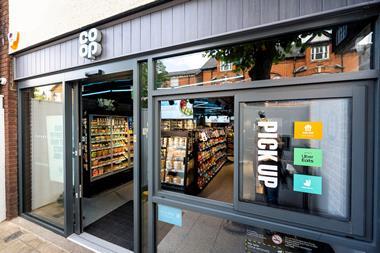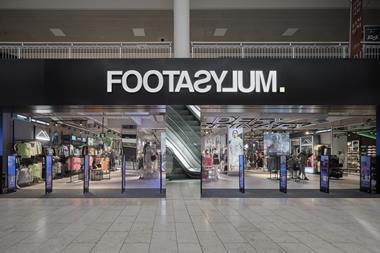White elephant or white gold? It is tempting to say that Cabot Circus – unveiled in Bristol last week – might be the former rather than the latter, given the upheaval in global financial markets as investors, banks and, to an extent, consumers, all come under pressure. But consider this: Cabot Circus is a 1.5 million sq ft mixed-used retail and residential scheme that was off the drawing board before the turn of the century and that has only just come to fruition – that’s the nature of a development pipeline. When work on the centre kicked off, the UK was still surfing a wave of optimism in the wake of Labour’s landslide general election victory in 1997.
That optimism was felt in all parts of the economy – not least the retail sector – and everybody felt that “things could only get better”. Recent events, however, have put paid to that notion and, nine years on, this shopping supercentre has opened against an economic backdrop where it is unclear whether consumers will be dipping into their wallets to indulge in anything as frivolous as a spot of retail therapy.
And yet, with its good looks and impressive retailer line-up, there is a good chance that they will – on its opening day, the Cabot Circus shopper surge had to be seen to be believed. This is a striking scheme and one that is genuinely needed. As the product of a partnership between Land Securities and Hammerson – aka The Bristol Alliance – Cabot Circus represents£500 million of bricks, steel and high-tension glass ceiling and it’s easy to see where the money’s gone.
And here, at last, is a shopping scheme that should provide a reason for affluent North Somerset and South Gloucestershire types to shop in the centre of Bristol rather than decamping to South Wales or maybe Cribbs Causeway. It also happens to be a thousand times better than the tawdry, lacklustre Broadmead shopping centre nearby – a large part of which is still trading.
It may also go some way towards healing the divide between the well-heeled citizens of Clifton – who live in Georgian splendour on the hill overlooking the bulk of the West Country metropolis – and the rest of the city sprawled beneath it. Cabot Circus may ultimately prove to be the commercial suture that joins the city’s two parts and heals this urban schism.
And given the scale of the time and money invested, it is perhaps not surprising that there are some outstanding stores that would put any UK shopping development, urban or out-of-town, to shame. Land Securities and Hammerson may have a few problems to deal with in this financial climate, but Bristol is unlikely to be one of them.
Cult
The 8,000 sq ft (743 sq m) Cult store – along one of the scheme’s arms where street fashion retailers predominate – is a showstopper. Cult head of retail John Kingston says that the design is aimed at “anyone aged 15 to 40 and if the music’s a bit too loud for them, they can go to House of Fraser where we have a Superdry concession.” He adds that with Cult and Superdry up 10 per cent like-for-like on last year, “there’s nobody else out there doing those kinds of numbers at the moment.” There is much to praise about the store’s design, not least the drama that store design manager Simon Kirby has created, using the fact that the entire floor is beneath the street-level entrance to give shoppers entering the store a platform from which to survey the whole shop. The denim department is an integral part of the design and its visual merchandising is among the best at Cabot Circus.
Harvey Nichols
Harvey Nichols commercial director Patrick Hanley is clear about what the latest outpost of London’s designer haven represents. “This is our chance to show what we can do with 37,000 sq ft,” he says. This is Cabot Circus’s glamourpuss, with gold-coloured walls, a restaurant that feels as if you have left Bristol and walked into Knightsbridge and a wine display that makes you want to buy even when you haven’t got the funds. The store opened a day ahead of the rest of the development and, in three hours’ trading, managed to take£25,000, according to Hanley. That’s including the£7,000 one shopper spent on a small bag – proof, if proof were needed, that while the capital of the Southwest may be feeling the effects of the credit crunch, people are still prepared to splash out – and have the money to do so.
House of Fraser
As the 170,000 sq ft (15,793 sq m) anchor of this scheme, you would expect House of Fraser to have put its best foot forward – and it does not disappoint. With an interior created once more by Kinnersley Kent Design, this multi-level shop really does merit the use of the F-word – flagship – and it is like nothing else in the city. Perhaps the most impressive floor is the one that houses its menswear offering. Chief executive John King is enthusiastic. “It’s my favourite floor,” he says. “The scale is like a cathedral – there’s a real sense of space.” There certainly is and with brands such as Ralph Lauren, Superdry and Ted Baker, it is also an eclectic mix. Of particular note are the shoe and jewellery departments in the basement. In the former, the mid-shop has circular fixtures with black, high-gloss sides and a translucent top lit up from within, creating a slick and highly contemporary area (pictured). The jewellery space is equally impressive with glass and steel cabinets lit by strings of small LED lights.
Urban Outfitters
You know when you’re approaching Urban. The quirky wood-clad exterior and elaborately stage-managed windows notwithstanding, a piece of cast concrete at its entrance spells out the retailer’s name. There is something Mount Rushmore about this and inside, the store has all the Urban Outfitters UK hallmarks that shoppers will be familiar with – from a chunky wooden staircase to the exposed breeze blocks that form parts of the perimeter. The staircase is lit with rows of pendant light bulbs, in a nod towards Dutch design collective Droog. And there are constant changes of pace throughout the store’s two floors. “I’m pleased with the way we solved the entrance problem with the different levels that the stores has – it wasn’t easy,” says construction director Steve Morris. Designed by New York-based consultancy Pompei AD, the Urban Outfitters store does much to encapsulate the new face of Bristol shopping and sits comfortably alongside neighbours such as Cult, American Apparel and G-Star Raw.
Topshop/Topman
Standing at one of the entrances to Cabot Circus, the 14,000 sq ft (406 sq m) Topshop/Topman store looks quite small when you enter at ground level. The upper level has a new perimeter merchandising system, according to a spokesman, but the real action is downstairs in the much larger basement. Finding your way downstairs is not difficult as there is a vast, curved sign set into the stairwell, urging shoppers to head into the basement. Downstairs, innovations include a new treatment for the Moto jeans area and a shoe department that has been put side-by-side with an Office concession. As Topshop and Topman are on the same floor in this store, stringent efforts have been made to differentiate between the two areas. Dark grey tiling marks out the Topman department, while bright white flooring demarcates Topshop. The sense of separation is completed by the use of an arch to gain access to Topman.
Thomas Sabo
Not a name that will be familiar to everyone, German sterling silver jewellery retailer Thomas Sabo operates in the UK predominantly through concessions in some of London’s glitzier department stores. In Cabot Circus, it has its own standalone shop and succeeds in creating an eye-catching interior through the use of a shocking fuchsia colour scheme, mirrors, glass and extravagant Murano-style chandeliers. This is one of the smaller units in the scheme, but it punches considerably above its weight.


























1 Reader's comment